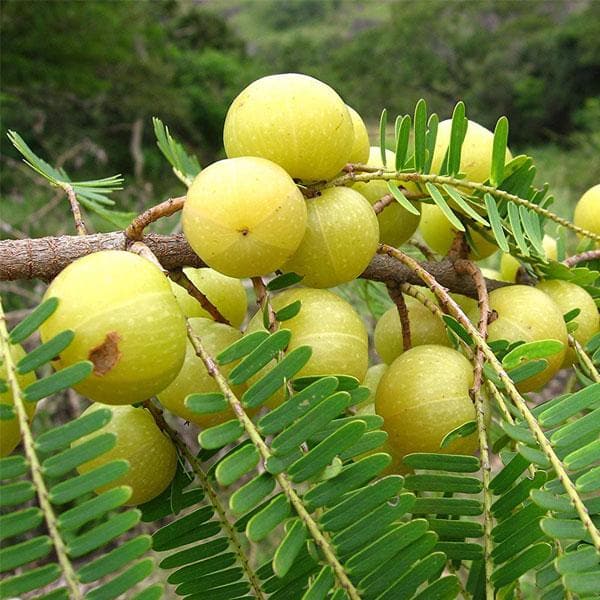
Amla Plant Health: Complete Disease Control Guide
Share
Introduction
Amla, also known as Indian gooseberry, is a powerhouse of nutrients and has been revered in Ayurvedic medicine for centuries. However, like any other crop, amla is susceptible to various diseases that can impact its yield and quality. Effective disease management is crucial to ensure a healthy and productive amla plantation. This blog will explore common diseases affecting amla, their symptoms, and management practices to keep your amla plants thriving.

Common Diseases in Amla
1. Amla Rust (Ravenelia emblicae)
Symptoms:
Appearance of orange-yellow pustules on the leaves, stems, and fruits.
Premature leaf drop and reduced fruit quality.

Management:
Regular monitoring of plants for early signs of rust.
Pruning and destroying affected plant parts to prevent the spread.
2. Anthracnose (Colletotrichum gloeosporioides)
Symptoms:
Dark, sunken lesions on fruits, leaves, and twigs.
Defoliation and dieback of branches.

Management:
Use disease-free planting material.
Implement good sanitation practices by removing and destroying infected plant debris.
Spray copper-based fungicides or Bordeaux mixture during the onset of disease.

3. Root Rot (Fusarium spp. and Rhizoctonia solani)
Symptoms:
Wilting of plants, yellowing of leaves, and stunted growth.
Reddish-brown discoloration of roots, leading to root decay.

Management:
Ensure proper drainage to avoid waterlogging.
Treat soil with Trichoderma viride or other biological control agents.
Avoid overwatering and maintain optimal soil moisture levels.

Integrated Disease Management Strategies
1. Cultural Practices
Crop Rotation: Rotate amla with non-host crops to break the life cycle of soil-borne pathogens.
Sanitation: Regularly clean and disinfect pruning tools and equipment.
Pruning: Remove and destroy diseased plant parts to minimize the spread of infections.
Planting Density: Maintain proper spacing to ensure good air circulation and reduce humidity, which can exacerbate disease spread.
2. Biological Control
Beneficial Microorganisms: Introduce beneficial fungi and bacteria such as Trichoderma and Bacillus subtilis to the soil to suppress pathogens.
Neem Oil: Use neem oil sprays as a natural fungicide to control fungal infections.

3. Chemical Control
Fungicides: Apply recommended fungicides as a preventive measure and during the early stages of disease development. Follow label instructions carefully to avoid overuse and resistance buildup.
Soil Treatment: Use soil fumigants in severe cases to eliminate persistent soil-borne pathogens.
Monitoring and Early Detection
Regular monitoring and early detection are key components of effective disease management.
Conduct weekly inspections of your amla plants, paying close attention to any signs of disease.
Early intervention can significantly reduce the impact of diseases and improve overall plant health.
Conclusion
Managing diseases in amla requires a holistic approach that combines cultural, biological, and chemical control methods. By understanding the common diseases affecting amla and implementing effective management strategies, you can ensure a healthy and productive amla plantation. Regular monitoring, good sanitation practices, and timely interventions are crucial to keeping your amla plants disease-free and thriving.Implement these practices to protect your amla crop, and enjoy the numerous health benefits and nutritional value that this remarkable fruit offers.
